7 Steps To Create A Successful Corporate Apparel Program
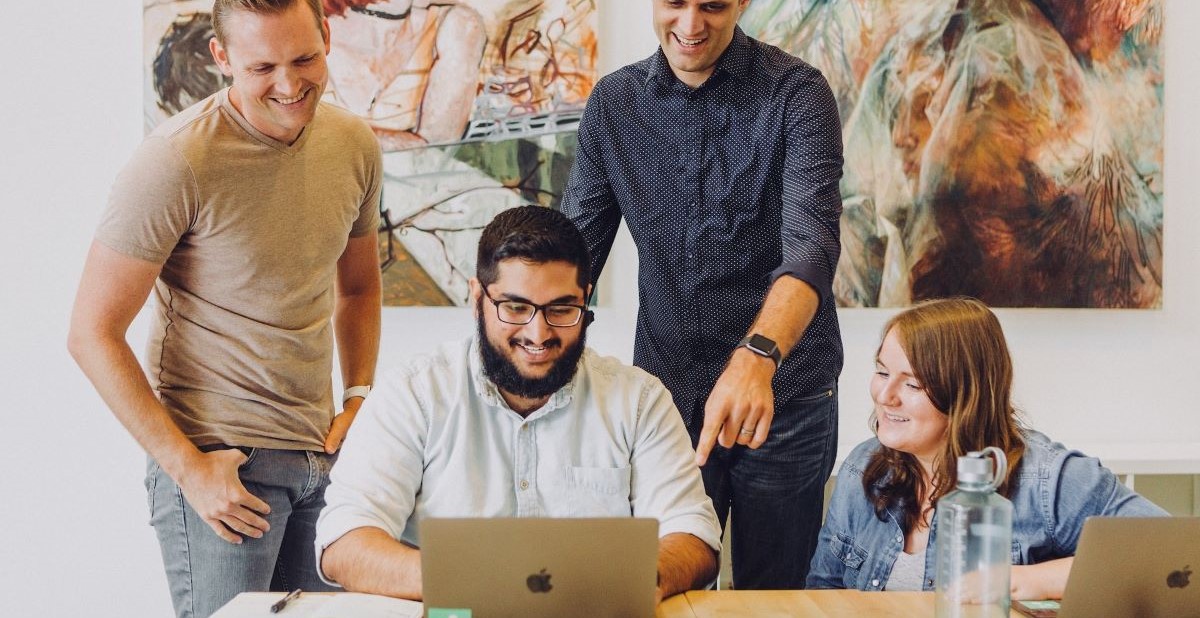
Designing a branded apparel program can be daunting. But if you ask the right questions and focus on the people who will be wearing the garments and what they want and need, you can make sure you and your clients are set up for success.
Here, we talked with two corporate apparel experts from Perry Ellis International (PPAI 255232, S8) to find out how to break down the process into manageable steps.
STEP 1: Identify Your Client’s Company Culture
Who are you working with? Is this a casual company like a tech startup, a more traditional environment like a law firm, or something in between? Getting a feel for the overall company culture will help you narrow down the selection of potential garments, whether it’s a T-shirt-and-jeans kind of company or a workforce more likely to wear a polo shirt and slacks.
“Usually what I will tell people is, just figure out what is the culture, what is the demographic? Is it a young company, is it an older group, is it a law firm?” says Jeff Smith, vice president of corporate sales.
STEP 2: Get To Know Your Primary Decision-Maker (Buyer) And Recruit An End User Advisory Committee
Most likely you’ll be dealing with a point person in HR or marketing, but it’s important to seek input from a variety of employees, advises Amy Mazur, regional sales manager. She recommends that clients recruit a panel of individuals who represent a diverse cross-section of the staff to provide input and help choose the garments they will eventually be wearing.
“What we’ve found is sometimes you’ll have a decision-maker that’s maybe not taking into account what women would like or what the other demographics would like,” she says, “so I think it’s important to have a group of people at the end-user level helping make this decision.”
This helps avoid the potential pitfall of ordering a large program that the staff isn’t happy with – and sets you up for satisfied clients who order more.
STEP 3: Ask Questions
This is probably the most important step. Now that you have your advisory panel, use them as a resource to tailor your recommendations.
Among the questions you should ask: What is the intended use of the apparel? What is your color scheme? Are brand-name garments important? (And, of course: What’s your budget?)
“We need to know pretty quickly what type of company this is and what do they want with the apparel,” says Smith. “Do they want it to be used as just weekend wear, or is it everyday wear that they can wear out to dinner, too?”
Also ask what technical features, if any, they are looking for in their brandable garments, such as easy care, moisture-wicking, antimicrobial, UPF rating (sun protection), sustainable/recycled fabrics, etc.
“Companies are getting more savvy and they’re asking. They want these types of certifications that have become more important, where maybe five years ago no one cared,” says Smith. “Now I think we’re getting more pressure as a manufacturer to design product that’s actually good for the environment.”
STEP 4: Establish Scope (How Many Garments, What Types)
Now that you know generally what your client is looking for, it’s time to determine the scope of the apparel program. Is this a single shirt for outfitting an event, a set of items in a welcome kit or a selection for a company store?
Also be sure to identify who will be wearing the garments and what their job functions are, because different divisions may require different pieces to better serve them. For example, the general manager of a car dealership may want a tailored button-down shirt, which would not be practical for the mechanics in the repair shop.
“You have your sales guys, so they’re going to be in a different polo, and you have management that might be in a woven, and then you have your technicians that might be in a more technical shirt,” says Mazur. “I’ve specifically done that for a dealership where there are literally three different pieces in that program.”
STEP 5: Get Samples In The Clients’ Hands
It’s all abstract until folks can touch and feel the product – and better yet, try it on.
“I say, ‘Specs equals checks,’” says Mazur, “because once you give them a spec sample, they can see what they like about the garment or what they might not like, and then you can transition them into a piece that would work well for everybody.”
STEP 6: Decide On Decoration
Garment decoration has evolved from the standard logo embroidered on the left chest. Mazur encourages sleeve logos and other different placements for a modern look.
“Now we’re seeing more subtle logos, tone on tone, sleeve logos, back yoke, even down on the tail. We’re doing a lot more embroidery down there,” adds Smith. “It goes back to the company culture. Is it a company that really wants to be kind of subtle and sleek, or do they want to blast out their big logo?”
STEP 7: Don’t Forget About Presentation
Once you’ve gathered all the info and designed an apparel program tailored to your client’s needs, be sure to add the finishing touches to make a great first impression when they receive their branded garments. Would you rather get a box stuffed with polos or a stack of carefully folded, individually tagged custom shirts?
“We typically say it’s really a value-added service,” says Mazur. “It’s really a great presentation that the customer is receiving.”
Here are a few garments to consider for your next corporate apparel project:
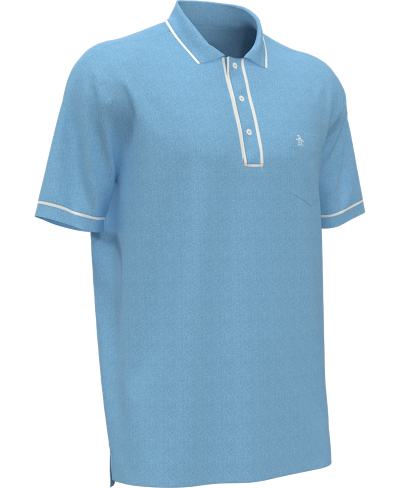
Go for classic retro style with the Penguin Golf Earl Polo, made of 100% polyester moisture-wicking fabric. Details include a contrast-embroidered Pete logo on the left chest pocket, as well as contrast tipping on collar, placket and cuffs. Available in seven colors (regatta blue shown), sizes S-4X. Women’s companion available.
Perry Ellis International / PPAI 255232, S8 / www.pei-corporateapparel.com
![]()
The ICON Women’s Snag Proof Performance Polo features a three-button placket with a Y-neck opening. Made from a high-performance fabric, it defies snags, fights odors, wicks moisture and provides UV protection to keep your professional edge all day long. Available in five colors (red shown), sizes XS-3X. Men’s companion available.
KNOSS Apparel / PPAI 798753, S1 / www.knoss.com
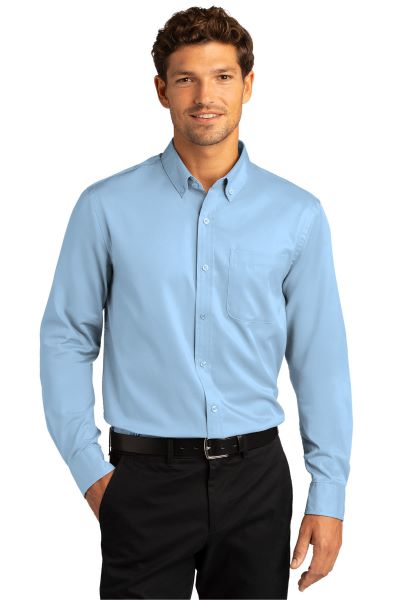
The Port Authority Long Sleeve SuperPro React Twill Shirt provides classic professional style with easy care features including wrinkle resistance and stain release. Available in 18 colors (cloud blue shown), sizes XS-4X. Women’s companion available.
SanMar / PPAI 110788, S16 / www.sanmar.com
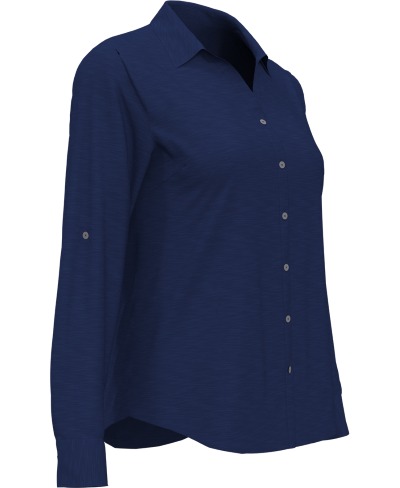
This cotton/poly/elastane Perry Ellis Ladies Heathered Woven Shirt offers a touch of stretch for easy movement, and the long sleeves convert to three-quarter sleeves with a fold-over tab and button on the inside. Available in four colors (navy shown), sizes S-3X. Men’s companion available.
Perry Ellis International / PPAI 255232, S8 / www.pei-corporateapparel.com
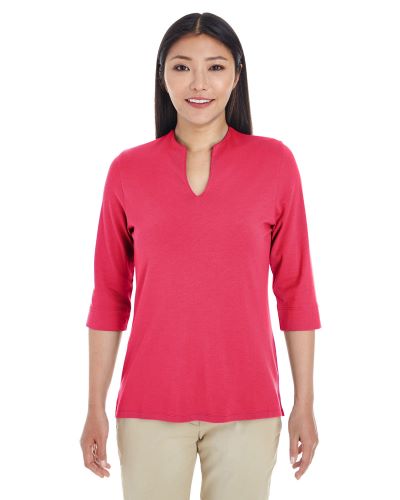
This Devon & Jones Ladies’ Perfect Fit Tailored Open Neckline Top offers a feminine silhouette with three-quarter sleeves, keyhole neckline and longer hemline, and the soft cotton/modal blend drapes without clinging. Available in seven colors (red shown), sizes XS-3X.
alphabroder|Prime Line / PPAI 156993, S16 / www.alphabroder.com
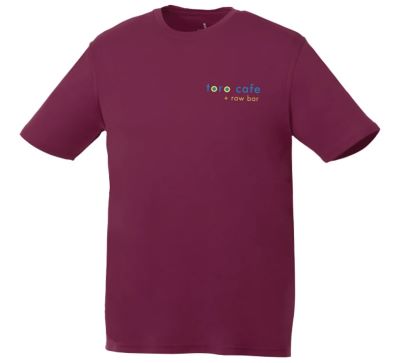
Button-downs and polos may not be practical for workers in auto shops, warehouses and other physical jobs. This Trimark Men’s Omi Short Sleeve Tech Tee is snag resistant, wicks away moisture and offers built-in UV protection. Available in 11 colors (maroon shown), sizes S-3X. Women’s companion available.
PCNA / PPAI 113079, S15 / www.pcna.com
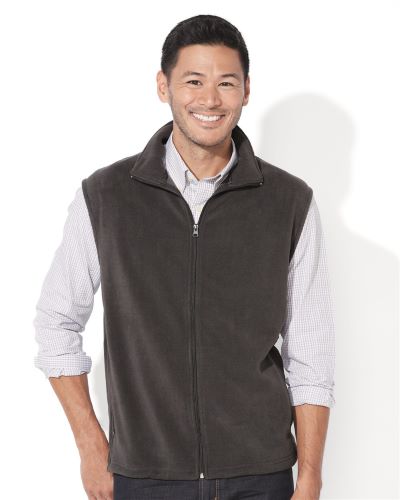
Standardize a variety of outfits with a branded vest like this Sierra Pacific Unisex Microfleece Full-Zip Vest, with dyed-to-match accent piping and zipper, plus zippered side pockets and a barrel toggle drawstring waist. Available in three colors (charcoal shown), sizes S-3X.
S&S Activewear / PPAI 256121, S12 / www.ssactivewear.com

